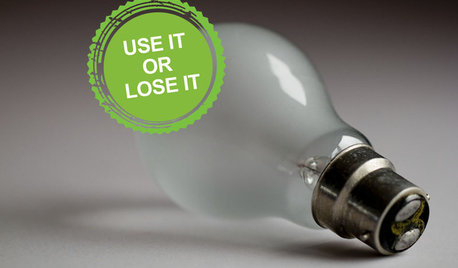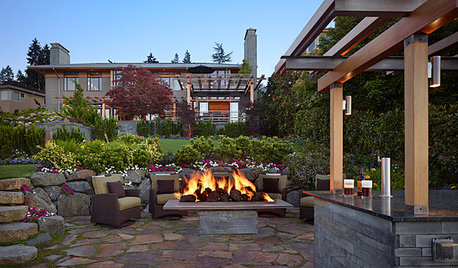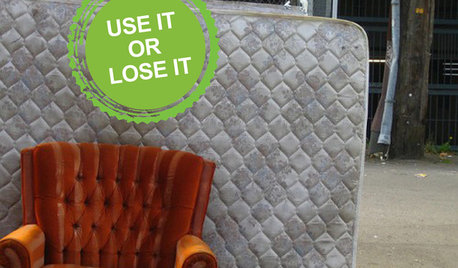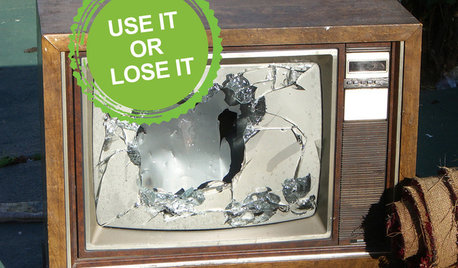How to get rid of Sumacs?
milehighgirl
14 years ago
Related Stories

MOST POPULARHow to Get Rid of Those Pesky Summer Fruit Flies
Learn what fruit flies are, how to prevent them and how to get rid of them in your home
Full Story
DECORATING GUIDESLose It: How to Get Rid of Old Light Bulbs
When the light goes out, you'll want to get rid of the bulb safely. Here's how
Full Story
DECORATING GUIDESUse It or Lose It: How to Get Rid of Old Keys
Clean out your junk drawer by getting rid of keys in an earth-friendly way
Full Story
DECLUTTERINGDownsizing Help: How to Get Rid of Your Extra Stuff
Sell, consign, donate? We walk you through the options so you can sail through scaling down
Full Story
DECORATING GUIDESLose It: 4 Ways to Get Rid of Your Old Carpet
Try one of these earth-friendly tips before stuffing your dingy carpet or rug in the trash
Full Story
GARDENING AND LANDSCAPING4 Good Ways to Get Rid of Mosquitos in Your Yard
Stay safe from West Nile virus and put an end to irksome itches with these tools and methods for a porch, patio or yard
Full Story
DECORATING GUIDESLose It: How to Get Rid of a Mattress
Updating your bedroom? Here's how to donate, reuse or recycle that mattress — and keep it out of the landfill
Full Story
MORE ROOMSHome Tech: Getting Rid of Wires Without Sacrificing Sound
Wireless home technology still isn't perfect, but new products are giving audiophiles choices
Full Story
DECORATING GUIDESCleaning Out: The Right Way to Get Rid of Electronics
Learn how to dispose of worn-out electronics in a safer, more Earth-friendly way
Full Story
EDIBLE GARDENSNatural Ways to Get Rid of Weeds in Your Garden
Use these techniques to help prevent the spread of weeds and to learn about your soil
Full Story






ken_adrian Adrian MI cold Z5
iforgotitsonevermind
Related Discussions
What is this horrible weed and how do I get rid of it???
Q
Fire Ants: How do I know I have them and how do I get rid of them
Q
What type of weed is this and how do I get rid of it?
Q
Getting rid of mosquitoes without getting rid of your good bugs
Q
brandon7 TN_zone7
brandon7 TN_zone7
milehighgirlOriginal Author
mad_gallica (z5 Eastern NY)
milehighgirlOriginal Author
iforgotitsonevermind
ken_adrian Adrian MI cold Z5
Iris GW
milehighgirlOriginal Author
brandon7 TN_zone7
iforgotitsonevermind
brandon7 TN_zone7
mad_gallica (z5 Eastern NY)
brandon7 TN_zone7
iforgotitsonevermind
giantslug
brandon7 TN_zone7
iforgotitsonevermind
katskan41
Dan _Staley (5b Sunset 2B AHS 7)
iforgotitsonevermind
brandon7 TN_zone7
iforgotitsonevermind
brandon7 TN_zone7
stimpy926
sam_md
iforgotitsonevermind